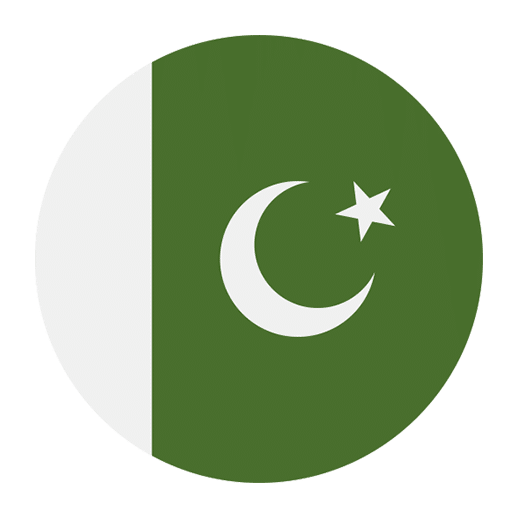Embarking on crafting and DIY projects can be a delightful and rewarding endeavor, especially when you delve into the rich world of Urdu terminology. Whether you’re a seasoned crafter or just starting, knowing some common Urdu words can enhance your experience and help you appreciate the cultural nuances embedded in this beautiful language. In this article, we’ll explore various Urdu words related to crafting and DIY projects that can be incredibly useful for English speakers. Let’s dive in!
Basic Crafting Supplies
Understanding the basic supplies is essential for any crafting or DIY project. Here are some Urdu terms for commonly used materials and tools:
– **Paper** – کاغذ (Kaaghaz): Whether you’re making origami or creating intricate paper designs, knowing the word for paper is fundamental.
– **Scissors** – قینچی (Qainchi): A must-have tool in any crafter’s kit, scissors come in various shapes and sizes for different cutting needs.
– **Glue** – گوند (Gond): Essential for sticking pieces together, glue is a primary adhesive in many projects.
– **Thread** – دھاگہ (Dhaaga): Used in sewing, embroidery, and various other crafts, thread is another staple.
– **Needle** – سوئی (Sui): Paired with thread, needles are used for stitching fabrics, making them indispensable in sewing projects.
– **Fabric** – کپڑا (Kapra): From quilting to making clothes, fabric is a versatile material in the crafting world.
– **Buttons** – بٹن (Button): These small fasteners can be both functional and decorative.
– **Beads** – موتی (Moti): Beads are used in jewelry making, embroidery, and various decorative crafts.
Specialty Tools and Materials
For more advanced crafters, there are specialty tools and materials that can elevate your projects. Here are some Urdu words for these items:
– **Pliers** – پلاس (Pilas): Used for bending wires and holding small objects, pliers are crucial in jewelry making and other detailed crafts.
– **Wire** – تار (Taar): Often used in jewelry making, wire can add structure and design elements to your creations.
– **Paint** – رنگ (Rang): Whether you’re painting a canvas or adding details to a model, paint is a versatile medium.
– **Brush** – برش (Brush): Paired with paint, brushes come in various shapes and sizes for different techniques.
– **Clay** – مٹی (Mitti): Often used in sculpting and pottery, clay allows for three-dimensional creativity.
– **Stencil** – سانچہ (Sancha): Stencils help in creating consistent designs and patterns, especially in painting and fabric decoration.
– **Embroidery Hoop** – کڑھائی کا دائرہ (Karhai Ka Daaira): Essential for holding fabric taut while embroidering, these hoops come in various sizes.
– **Yarn** – اون (Oon): Used in knitting and crocheting, yarn comes in various textures and colors.
– **Knitting Needles** – بُننے کی سوئیاں (Bunne Ki Suiyan): Paired with yarn, these needles are used to create knitted fabrics.
– **Crochet Hook** – کروشیٹ کی سوئی (Crochet Ki Sui): Similar to knitting needles, but used for crochet projects.
Crafting Techniques
Understanding various crafting techniques can open up new possibilities for your projects. Here are some Urdu terms for common techniques:
– **Sewing** – سلائی (Silai): The process of stitching fabrics together, sewing is fundamental in many crafts.
– **Knitting** – بننا (Bunna): Using two needles to create fabric from yarn, knitting is a popular technique for making clothing and accessories.
– **Crochet** – کروشیٹ (Crochet): Similar to knitting but using a single hook, crochet allows for intricate designs and textures.
– **Embroidery** – کڑھائی (Karhai): The art of decorating fabric with needle and thread, embroidery can add beautiful details to your projects.
– **Weaving** – بُننا (Bunna): Creating fabric by interlacing threads, weaving is a traditional craft with endless possibilities.
– **Quilting** – لحاف بنانا (Lihaf Banana): Sewing together layers of fabric to create a quilt, this technique is both functional and decorative.
– **Painting** – پینٹنگ (Painting): Applying color to a surface, painting can range from fine art to decorative crafts.
– **Sculpting** – مجسمہ سازی (Mujasma Saazi): Creating three-dimensional objects from materials like clay, sculpting is a form of artistic expression.
– **Beading** – موتیوں کا کام (Motioun Ka Kaam): Using beads to create jewelry or embellish fabric, beading adds sparkle and texture to your projects.
Project Types
Different crafting projects have different terminologies. Here are some Urdu words for common types of DIY projects:
– **Jewelry Making** – زیورات بنانا (Zewarat Banana): Creating necklaces, bracelets, earrings, and other adornments, jewelry making involves various techniques and materials.
– **Home Decor** – گھر کی سجاوٹ (Ghar Ki Sajaawat): From wall art to decorative pillows, home decor projects can personalize your living space.
– **Scrapbooking** – سکریپ بکنگ (Scrapbooking): Preserving memories by creating decorated photo albums, scrapbooking involves various paper crafts and embellishments.
– **Card Making** – کارڈ بنانا (Card Banana): Designing and making greeting cards for various occasions, card making can be a fun and creative outlet.
– **Pottery** – کمہار کا کام (Kumhar Ka Kaam): Shaping and firing clay to create pots, vases, and other items, pottery is an ancient craft with modern appeal.
– **Woodworking** – لکڑی کا کام (Lakri Ka Kaam): Creating items from wood, woodworking can range from simple carvings to complex furniture.
– **Origami** – اوریگامی (Origami): The Japanese art of paper folding, origami can create intricate designs from simple sheets of paper.
– **Calligraphy** – خطاطی (Khattati): The art of beautiful handwriting, calligraphy can add an elegant touch to any project.
Descriptive Words and Phrases
When discussing your projects, it’s helpful to know some descriptive words and phrases in Urdu. Here are a few:
– **Beautiful** – خوبصورت (Khoobsurat): Use this word to describe any project that turns out particularly well.
– **Colorful** – رنگ برنگا (Rang Biranga): This word is perfect for projects that use a variety of colors.
– **Intricate** – پیچیدہ (Pechida): For designs that are detailed and complex, this word is very apt.
– **Simple** – سادہ (Saada): Use this word for projects that are straightforward and easy to make.
– **Traditional** – روایتی (Riwayati): This word is great for projects that draw on cultural or historical techniques.
– **Modern** – جدید (Jadeed): Use this term for projects that have a contemporary or up-to-date look.
– **Unique** – انوکھا (Anokha): Perfect for describing one-of-a-kind creations.
– **Elegant** – شاندار (Shandar): Use this word for projects that have a refined and sophisticated appearance.
– **Rustic** – دیہاتی (Dehati): Great for projects with a natural or old-fashioned feel.
– **Functional** – عملی (Amali): This word is ideal for projects that are not only beautiful but also useful.
Common Phrases for Crafting Conversations
Knowing some common phrases can help you discuss your projects with fellow crafters. Here are a few useful ones in Urdu:
– **What are you making?** – آپ کیا بنا رہے ہیں؟ (Aap Kya Bana Rahe Hain?)
– **I am making a…** – میں ایک … بنا رہا ہوں (Main Ek … Bana Raha Hoon)
– **Can you help me?** – کیا آپ میری مدد کر سکتے ہیں؟ (Kya Aap Meri Madad Kar Sakte Hain?)
– **I need more…** – مجھے مزید … کی ضرورت ہے (Mujhe Mazeed … Ki Zarurat Hai)
– **Where can I buy…** – میں … کہاں سے خرید سکتا ہوں؟ (Main … Kahan Se Khareed Sakta Hoon?)
– **This is beautiful!** – یہ خوبصورت ہے! (Yeh Khoobsurat Hai!)
– **I love this color.** – مجھے یہ رنگ پسند ہے۔ (Mujhe Yeh Rang Pasand Hai)
– **How did you make this?** – آپ نے یہ کیسے بنایا؟ (Aap Ne Yeh Kaise Banaya?)
– **What materials did you use?** – آپ نے کون سے مواد استعمال کیے؟ (Aap Ne Kaun Se Mawaad Istemaal Kiye?)
– **This looks amazing!** – یہ حیرت انگیز لگ رہا ہے! (Yeh Hairat Angaiz Lag Raha Hai!)
Conclusion
Crafting and DIY projects are not just about creating beautiful objects but also about expressing creativity and connecting with different cultures. By incorporating Urdu terms into your crafting vocabulary, you can enrich your projects and gain a deeper appreciation for the language and culture. Whether you’re discussing materials, techniques, or finished projects, these common Urdu words and phrases will help you navigate the crafting world with ease. Happy crafting!

